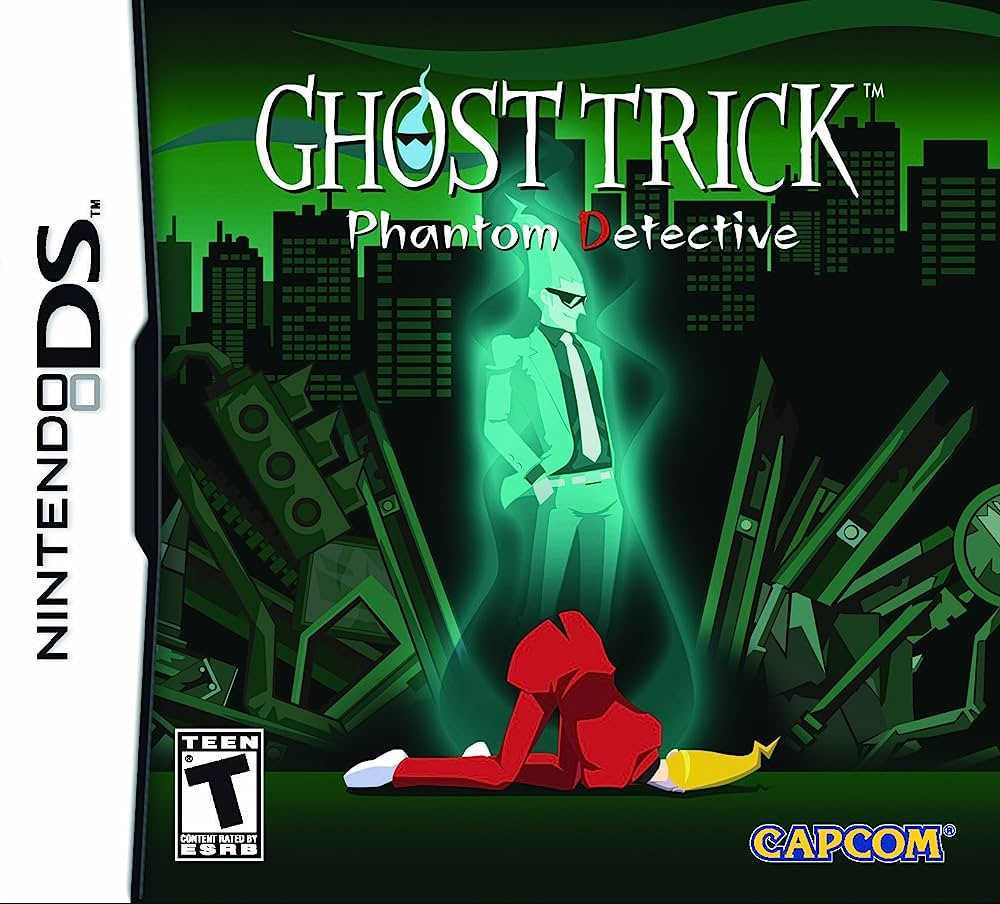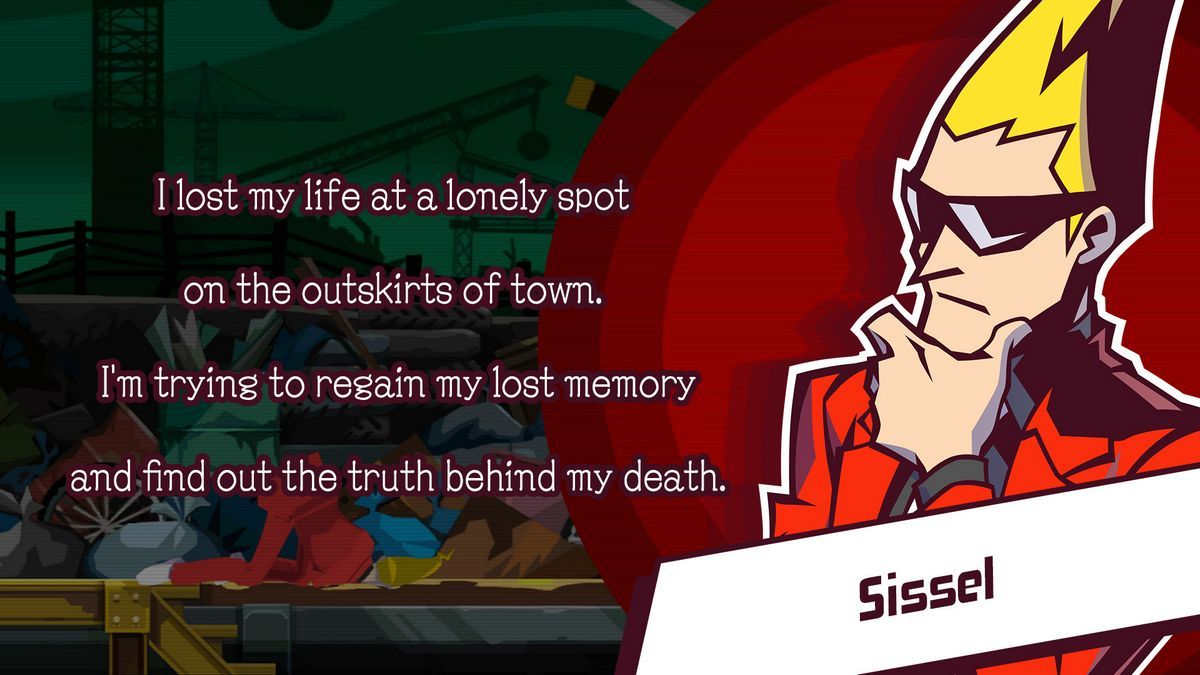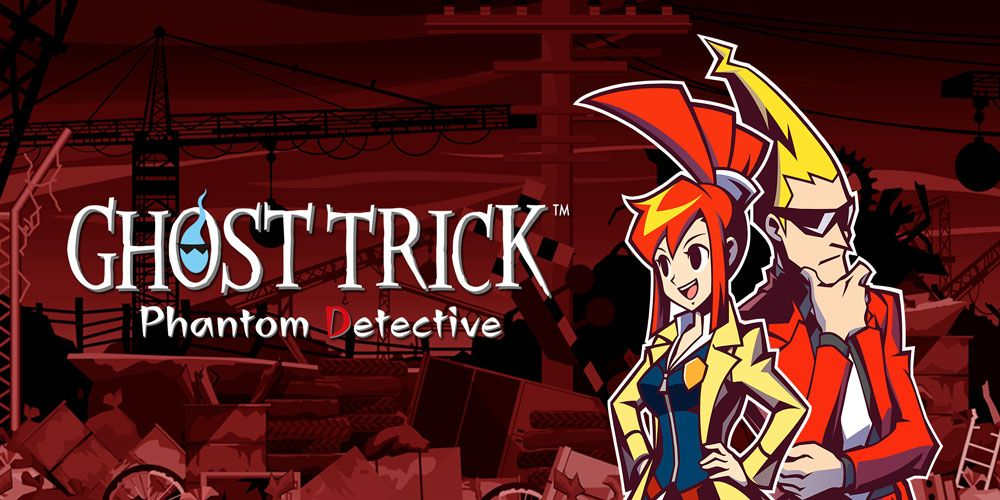Ghost Trick: Phantom Detective is a captivating puzzle game developed by Capcom for the Nintendo DS and iOS platforms. It has received critical acclaim for its intricate plot, unique gameplay mechanics, and stunning visuals. In this game, players take on the role of Sissel, a recently deceased spirit who can possess inanimate objects and manipulate them to solve puzzles and unravel the mystery behind his own death. The game’s narrative style employs elements of film noir mixed with supernatural themes that keep players engaged from start to finish.
The gameplay revolves around manipulating time through using Sissel’s ghostly powers to prevent other characters’ deaths while also uncovering clues about his own untimely demise. The player must use their wits to navigate complex environmental puzzles set within beautifully rendered 2D environments where everything has a purpose. Ghost Trick: Phantom Detective is praised for its innovative “ghost tricks” mechanic which allows players to travel freely between different objects in order to complete each level.
In addition to its intriguing storyline and exhilarating gameplay mechanics, Ghost Trick: Phantom Detective also features an impressive soundtrack composed by Masakazu Sugimori that perfectly captures the ominous mood of the game’s atmosphere.
Overall, Ghost Trick: Phantom Detective is an excellent example of how creative storytelling combined with clever gameplay design can produce a truly unforgettable gaming experience. Its unique approach towards puzzle-solving sets it apart from other games in its genre making it well worth playing for fans seeking something new or exciting.
- Unveiling the mechanics of gameplay in Ghost Trick: Phantom Detective
- A closer look at the story and characters of Ghost Trick: Phantom Detective
- The significance of puzzle-solving in advancing through the game’s narrative
- Exploring the use of supernatural abilities in Ghost Trick: Phantom Detective
- An analysis of how music and sound design enhances the experience of playing Ghost Trick: Phantom Detective
- Comparing Ghost Trick: Phantom Detective to other games within its genre
- Examining how cultural differences are represented within Ghost Trick: Phantom Detective’s storytelling approach
- Understanding how player choice impacts overall gameplay outcomes in Ghost Trick: Phantom Detective
Unveiling the mechanics of gameplay in Ghost Trick: Phantom Detective
It features a complex time-traveling story and intriguing gameplay mechanics that keep players engaged throughout the entire experience. The player takes on the role of Sissel, a ghost who has been murdered and must use his powers to solve the mystery surrounding his death.
The core gameplay mechanic in Ghost Trick: Phantom Detective revolves around manipulating objects within the environment to progress through each level. Players are given an array of abilities, such as possessing objects and rewinding time, which they can use strategically to overcome obstacles and move forward in the narrative.
Moreover, Ghost Trick: Phantom Detective employs an innovative dialogue system where players can listen in on conversations between characters before they occur. This allows for strategic planning and decision-making before events unfold, making each decision feel weighted with significance.
Overall, Ghost Trick: Phantom Detective’s intricate blend of storytelling and gameplay makes it one of Capcom’s most standout titles. Its creative mechanics offer an enjoyable challenge for those looking for something different from traditional puzzle-solving games while still providing engaging characters whose fates you’ll become invested in along your journey as Sissel; this immersive title will leave you wanting more long after its credits have rolled!

A closer look at the story and characters of Ghost Trick: Phantom Detective

The game features an intricate storyline that revolves around a recently deceased detective named Sissel, who must use his newfound ghostly powers to solve his own murder and prevent others from meeting the same fate. The game’s narrative is rich with twists and turns, as well as unexpected character developments that keep players on their toes throughout the entirety of their playthrough.
One of the standout aspects of Ghost Trick: Phantom Detective is its cast of colorful characters, each with their own unique motivations and personalities. From Lynne, Sissel’s perky assistant who becomes embroiled in dangerous conspiracies after his death, to Inspector Cabanela, a flamboyant investigator whose true loyalties are never quite clear until late in the game – every character adds something interesting to the overall story. Even minor NPCs are given memorable quirks and backstories that make them feel like real individuals rather than just background decoration.
Furthermore, Ghost Trick: Phantom Detective boasts incredible art direction that lends itself perfectly to both its noir-inspired setting and supernatural themes. Character designs are both distinctive yet relatable while environments range from run-down alleyways to futuristic laboratories complete with high-tech gadgets. Additionally, animation plays an important role in driving home these settings’ moods; be it through rain pouring down during tense moments or subtle body language cues conveyed via sprite-based animations.
Overall if I had one phrase to sum up Ghost Trick: Phantom Detective it would simply “a masterpiece”. It deserves recognition not only for its creative gameplay mechanics but also its exceptional storytelling abilities which stand out even among other esteemed titles within its genre such as Ace Attorney series (which was also created by Capcom). For anyone looking for an engaging mystery experience full of quirky characters small details at every corner this title should definitely be on your radar!
The significance of puzzle-solving in advancing through the game’s narrative
As players take on the role of Sissel, a ghost who must solve puzzles and manipulate objects to uncover the truth behind his own death, they are required to exercise their critical thinking skills and engage with the game’s mechanics in order to progress.
Puzzle-solving is significant not only because it challenges players’ problem-solving abilities but also because it serves as an important storytelling device. By forcing players to interact with their environment and piece together clues, puzzles help drive the narrative forward and reveal crucial plot points that would otherwise remain hidden. This creates a sense of immersion for players as they become actively involved in unraveling the game’s mysteries.
Furthermore, successful completion of these puzzles often results in satisfying payoffs such as cinematic cutscenes or humorous interactions between characters. These rewards incentivize players to continue engaging with the puzzle elements and progressing through the narrative.

Overall, puzzle-solving is essential to Ghost Trick: Phantom Detective both from a gameplay perspective and as a means of storytelling. The intricate puzzles require careful consideration and strategic planning while simultaneously pushing players towards discovering more about Sissel’s past. Through its innovative use of puzzle mechanics within its narrative structure, this game provides an immersive experience that keeps players engaged until its thrilling conclusion.
Exploring the use of supernatural abilities in Ghost Trick: Phantom Detective
The player takes on the role of Sissel, a ghost who has recently died and must use his newfound powers to solve the mystery of his own death. Throughout the game, Sissel can possess various objects and manipulate them in order to progress through each level.
One of Sissel’s most powerful abilities is “trick time,” which allows him to manipulate time itself. This ability is essential for solving puzzles and completing tasks within various levels. Additionally, Sissel can also travel between objects by possessing them, allowing him to access areas that would be otherwise inaccessible.
The use of supernatural abilities adds a new layer of intrigue and complexity to Ghost Trick: Phantom Detective. It requires players to think creatively about how they can utilize these abilities in order to progress through each level successfully. Overall, this game showcases how supernatural elements can enhance gameplay mechanics and provide a fresh take on traditional detective-style games.
An analysis of how music and sound design enhances the experience of playing Ghost Trick: Phantom Detective
The game’s soundtrack, composed by Masakazu Sugimori, features a mix of jazzy tunes and eerie melodies that perfectly match the game’s mysterious atmosphere. The use of dynamic audio also adds to the immersive nature of the game – for example, when time is rewound in gameplay, there is an audible “rewind” effect that adds to the feeling of manipulating time.

Furthermore, Ghost Trick uses sound design as a key component in solving puzzles throughout the game. The player must listen closely to environmental noises or character dialogue cues to progress through levels successfully. For example, if a certain object needs to be moved or interacted with in order for progression through gameplay, often times it will make noise which can be detected by careful listening.
The combination of both music and sound design elevates Ghost Trick from being just another puzzle-solving adventure into an incredibly atmospheric experience filled with tension and intrigue. It immerses players into its world through not only visual cues but auditory ones as well – making players feel like they are truly partaking in protagonist Sissel’s journey towards uncovering his past.
Comparing Ghost Trick: Phantom Detective to other games within its genre
The gameplay mechanics of the game are unlike any other, as players must use their ghostly abilities to manipulate objects in the environment and possess different characters to solve puzzles and progress through the story. This makes it stand apart from traditional point-and-click adventure games, which can often feel slow-paced.
In terms of narrative, Ghost Trick: Phantom Detective also sets itself apart from other games within its genre. The plot is complex and intriguing with plenty of twists and turns that keep players engaged until the very end. Additionally, the game’s characters are well-developed with fully fleshed-out backstories that add depth to the overall experience.
Overall, while comparisons can be made between Ghost Trick: Phantom Detective and other puzzle or point-and-click adventure games such as Monkey Island or Professor Layton series respectively – this game stands on its own due to its unique gameplay mechanics and compelling storyline. It has rightfully earned a place among some of the best puzzle games ever released thanks to these qualities combined with an excellent music score and visuals that perfectly complement each other for an immersive experience like no other in gaming history.
Examining how cultural differences are represented within Ghost Trick: Phantom Detective’s storytelling approach
The game explores the concept of cultural differences by introducing various characters with different backgrounds and beliefs. The narrative intricately weaves together elements from Japanese, American, and European cultures through its characters’ identities and experiences.
The game’s central character, Sissel, is a ghost who possesses the ability to manipulate objects in his environment while also traveling back four minutes before someone’s death to try and prevent it. Throughout his journey, Sissel interacts with several culturally diverse characters such as Lynne, Missile, Cabanela, Jowd amongst others whose personalities are shaped by their cultural background.
Through these characters’ interactions and dialogues within Ghost Trick: Phantom Detective’s story arc; one can see how cultural differences influence relationships between individuals or groups of people. For instance, Lynne comes from a humble background; her behavior shows she values hard work while being respectful towards authority figures making her quite reserved at times compared to other assertive male leads like Inspector Cabanela.
Moreover Ghost Trick: Phantom Detective uses visual cues such as character designs which include clothing styles based on real-world fashion trends (especially those inspired by Parisian couture) juxtaposed against traditional Japanese architecture creating an amalgamation of different cultures that ultimately come together flawlessly under one umbrella theme- mystery-solving!
Understanding how player choice impacts overall gameplay outcomes in Ghost Trick: Phantom Detective
The game follows the story of Sissel, a ghost who has lost his memory and is trying to unravel the mystery behind his death. Throughout the game, players have to make choices that will affect both the immediate outcome of their current situation as well as the overall storyline.
The impact of player choice in Ghost Trick: Phantom Detective can be seen through its branching narrative. Depending on what choices players make, they may unlock entirely new paths in the story or miss out on important information altogether. Furthermore, some decisions may also lead to different endings based on how successful players were at uncovering key details about their own death.
In addition to impacting narrative outcomes, player choice can also affect gameplay mechanics in Ghost Trick: Phantom Detective. One example of this is how certain objects and characters can only be interacted with after specific events have occurred or if certain conditions are met. These interactions often require clever use of Sissel’s abilities such as possessing objects or manipulating time to alter environmental factors.
Overall, understanding how player choice impacts gameplay outcomes in Ghost Trick: Phantom Detective is crucial for those looking to fully experience everything this unique title has to offer. By carefully considering each decision made throughout playthroughs, players can unlock new narratives and deeper insights into both Sissel’s past and present circumstances while further enhancing their immersion within its world by experiencing more varied stories throughout multiple runs through this engaging adventure title!
In conclusion, Ghost Trick: Phantom Detective is an outstanding game that offers a unique gameplay experience. With its innovative mechanics and engaging story, Ghost Trick stands out among other puzzle-adventure games. The complex plot and intricate puzzles challenge players to think creatively in order to solve the mystery of protagonist Sissel’s death. Furthermore, the game’s visually stunning graphics and hauntingly beautiful soundtrack add to the immersive atmosphere created by this masterful work of storytelling.
Overall, Ghost Trick: Phantom Detective is a must-play for fans of adventure games and those seeking something new and exciting in gaming. Its creative use of mechanics and clever twists will keep players engaged from start to finish while offering thought-provoking challenges along the way. This game proves once again that creativity can lead to some truly amazing experiences within the world of video games.
Read More:- Unravel the mysteries of Phantom Brave: The Hermuda Triangle game – a thrilling adventure awaits!.
- Unleash Your Tactical Genius with Metal Gear Solid V: The Phantom Pain – A Must-Play Game!.
- Get Your Adrenaline Pumping with Excitebots: Trick Racing – the Ultimate Game for Thrill-Seekers!.
- Unleash Kratos' Fury in God of War: Ghost of Sparta – A Must-Play Game!.
- Unravel the Mysteries of Revachol in Disco Elysium – The Ultimate Detective Game!.
- Explore the Mystery Dungeon with Pokemon in the thrilling game Pokemon Mystery Dungeon: Explorers of Darkness.
- Unleash Your Inner Detective with Nancy Drew: The White Wolf of Icicle Creek Game.